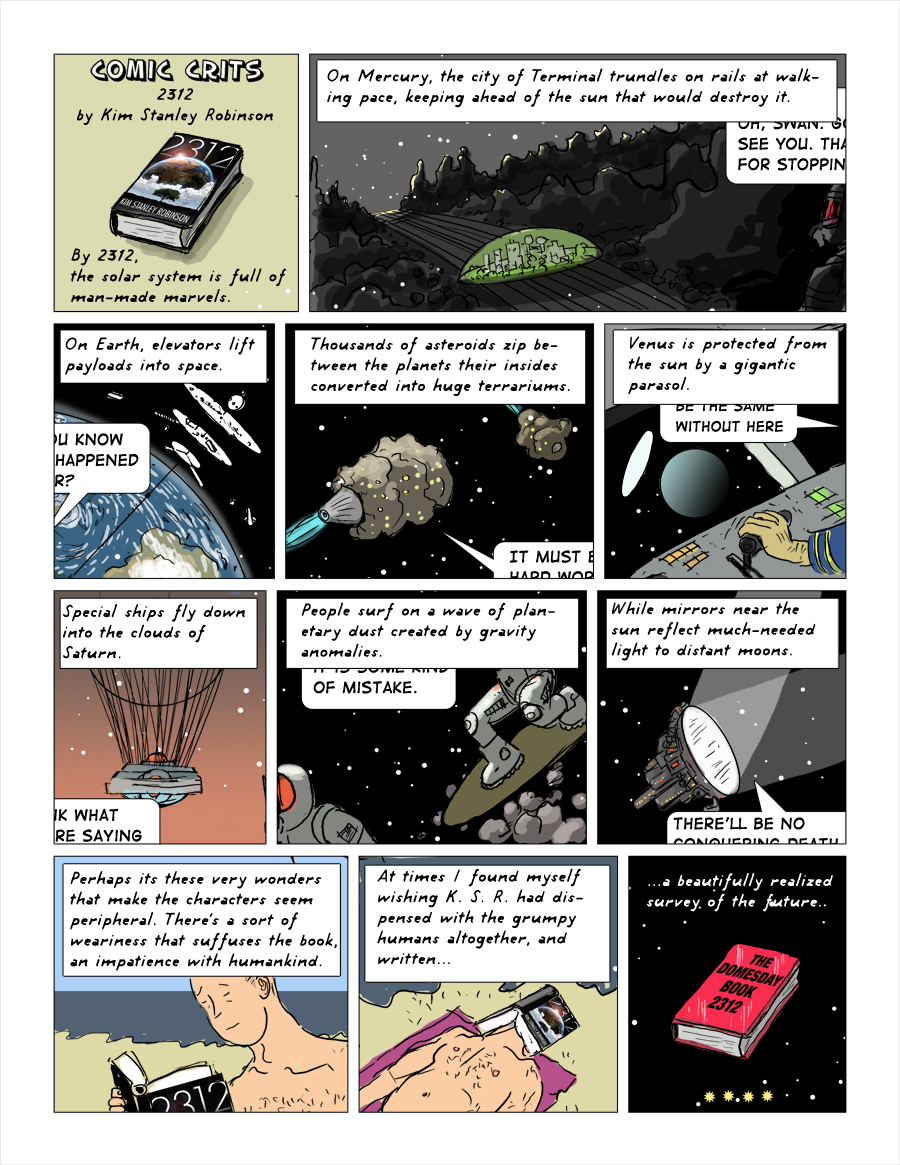

Robinson's latest novel continues these tendencies more boldly, intrepidly, and even joyously. Galileo's Dream (2009), while still recognizably Robinsonian, took greater risks with both form and style, and could be said to be have invested more heavily in aesthetic than mimetic narrative values and to have trusted far more than usual, for Robinson, in the reader's ability to understand and appreciate the text. His novels tend to be dense with both characterization and information and have from the beginning attempted to mesh the values and aesthetics of the literary novel with those of the science fiction novel, often by elaborating the minutiae of his characters' quotidian lives while at the same time recording their frequently verbal struggles as they grapple with politics and the major ethical questions confronting them. Kim Stanley Robinson numbers, without question, among science fiction's most ambitiously creative writers. Critics, though, might instead try to place the new work, as they read and consider it, within a larger context, albeit one that includes awareness of the author's previous work and (unavoidable) consciousness of the author’s reputation. Longtime fans who've read a significant portion of the author's oeuvre will likely read it with reference to both the author's reputation and previous work. Those without a lot of experience in the field will tend to read the work with reference to other work in the field released at the same time, regardless of the author's reputation or thematic and stylistic development.


Readers seldom approach the mature work of the most ambitiously creative writers in the field in the same way.


 0 kommentar(er)
0 kommentar(er)
